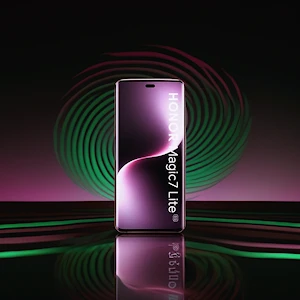The Honor Magic7 Lite: A Battery Beast with Compromises You Can Feel
Let’s cut to the chase: The Magic7 Lite isn’t here to win spec sheet wars. It’s here to survive your 14-hour day, binge-watch your favorite shows, and do it all without making you panic about finding an outlet. But like any phone under €400, it makes tradeoffs—some smart, some frustrating. Let’s break it down like we’re sitting at a café, and I’m handing you the phone to try yourself.
The Big Three: Screen, Battery, and “Good Enough” Performance
That Screen Though: The 6.78” AMOLED is the star here. At 120Hz, scrolling through TikTok feels like spreading butter on warm toast—smooth and satisfying. But here’s the kicker: that 4,000-nit peak brightness (yes, you read that right) turns this into a sunlight warrior. I tested it at high noon, and it laughed at my patio glare. Downside? Colors can feel a tad oversaturated if you’re used to flagship displays, but hey, for Netflix marathons? Chef’s kiss.
Battery Life – The Gas-Guzzler SUV of Phones: The 6,600mAh battery isn’t just big—it’s comically large. After a day of Zoom calls, YouTube, and way too much Instagram scrolling, I still had 40% left. For light users, this could stretch to two days. Charging? The 66W adapter (sold separately, because of course) gets you to 80% in 30 minutes. But here’s the rub: this thing’s thick. At 8mm and 189g, it’s like carrying a power bank that happens to make calls.
Performance: Cortex-78 Cores Meet Real Life: The Snapdragon 6 Gen1 handles daily tasks fine—until you push it. Instagram + Google Maps + Spotify? Smooth. Genshin Impact at medium settings? You’ll get playable 45fps… until the plastic back gets warm after 20 minutes (thank god for that cooling system). It’s a reminder: this chipset prioritizes efficiency over raw power. Perfect for casual users, frustrating for mobile gamers.
Cameras: One Hit Wonder
The 108MP main camera takes surprisingly decent daylight shots—details pop, dynamic range is respectable. But that 5MP ultrawide? It’s like using a disposable camera at a concert: grainy, washed out, and best avoided. Low-light performance is exactly what you’d expect from a €300 phone: passable if you stand still, messy if you don’t. The 16MP selfie cam? Solid for Zoom calls, struggles with backlit scenes. Pro tip: stick to the main sensor and pretend the others don’t exist.
Design Quirks & Hidden Wins
The plastic back feels… well, plasticky. But the IP65 rating means you can text in the rain without fear. No gaming buttons, but the curved edges make one-handed use possible (if you have pianist hands). And here’s a hidden gem: that dual-edge display minimizes accidental touches better than most Samsung phones I’ve tested. Surprise win.
Who’s This For?
Buy it if: You’re a heavy streamer, delivery driver, or someone who’s sick of charging their phone twice daily. The battery and screen combo is legitimately best-in-class for the price.
Skip it if: You’re a photography buff, hate plastic builds, or need flagship speed. The camera setup’s limitations become obvious fast, and that Snapdragon 6 chip shows its age in 2025.
My Take: Would I Use This Daily?
As someone who’s glued to their phone 18 hours a day? Yes—but with caveats. I’d miss wireless charging and a premium feel, but the battery life is a game-changer. It’s the phone I’d take to a music festival or hiking trip—durable enough, impossible to kill, with a screen visible in any lighting. But if you’re the type who cares about Instagram aesthetics or mobile gaming? Look at the Pixel 7a instead.
The bottom line: Honor made a phone that prioritizes endurance over elegance. It’s not glamorous, but for €298, it’s the reliable workhorse your pocket deserves.
